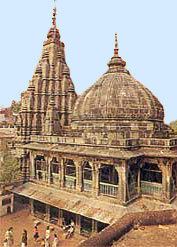 | ||
History of religion in Bihar
Since Bihar was a part of Aryavart the oldest religion of Bihar was Vedic Hinduism. Most of the people in Bihar follow Hinduism (82.7%) or Islam (16.9%).
Contents
- History of religion in Bihar
- Hinduism
- Buddhist pilgrimages
- Islam
- Sikhism
- Jainism
- Christianity
- Bah Faith
- Religious demographics
- References
Hinduism
Hindu Pilgrimage in Bihar sites are as follows:
Hinduism being the main religion of the state, most of the festivals stem from it. There are many variations on the festival theme. While some are celebrated all over the state, others are observed only in certain areas. But Bihar being so diverse, different regions and religions have something to celebrate at sometime or the other during the year. So festivals take place round the year.
On arrival in any part of this state, a tourist finds around him evidence of the extent to which religion enters into the daily life of the people. The calendar is strewn with festivals and fairs of different communities living together. Many of these are officially recognised by the days on which they take place being proclaimed as Government holidays.
The battle cries of the Bihar Regiment, consisting of 17 battalions, are "Jai Bajrang Bali" (Victory to Lord Hanuman).
Buddhist pilgrimages
Buddhism is very closely integrated with Bihar. Gautam Buddha attained Enlightenment at Bodh Gaya, a town located in the modern day district of Gaya. Buddhist pilgrimages in Bihar are as follows:
Islam
Islam constitutes second largest religion in Bihar. According to 2011 Indian census, there were 17,557,809 Muslims constituting 16.9% population of the state. Most of Bihari Muslims are concentrated in Seemanchal region which comprises Kishanganj, Araria, Katihar and Purnea, where Muslim population is around 45-50%.
Sikhism
Sikh pilgrimages in Bihar are as follows:
The capital of Bihar, Patna is one of the holiest city in Sikhism, as The tenth Guru of the Sikhs Guru Gobind Singh was born here in 1666 and spent his early years before moving to Anandpur. Patna was also honoured by visits from Guru Nanak in 1509 as well as Guru Tegh Bahadur in 1666. Takht Shri Harmandir Saheb also known as Patna Saheb is one of the Five Takhts of the Sikhism. The Gurdwara at Patna Sahib is in remembrance of the birthplace of Guru Gobind Singh, The tenth Guru of the Sikhs.Guru Nanak Dev visited Patna and stayed in GaiGhat 1509 A.D. and later same place was visited by Guru Tegh Bahadur along with his family visited this place in 1666.Gurdwara Pahila Bara commonly known as Gurdwara Ghai Ghat, is dedicated to these two Guru is situated at the same holy place.Gurdwara Gobind Ghat, Gurdwara Guru ka Bagh, Gurdwara Bal Leela is directly related to the childhood of The tenth Guru of the Sikhs Guru Gobind Singh.Gurdwara Handi Sahib was built in the memory of Guru Teg Bahadur. As Guru Teg Bahadur with Mata Gujri and Bala Preetam stayed here in 1728
After the partition of India in 1947, many Sikhs came to Patna. The total population of Sikhs in Biharis only 20,780. Most of bihari Sikhs are Nanak panthi. Most of the Sikhs are residing in Patna and mainly they are self-employed or in business
Jainism
Jain pilgrimages in Bihar are as follows:
Vardhamana Mahavira, the 24th and the last Tirthankara of Jainism, was born in Vaishali around sixth century B.C. Vasupujya, the 12th Jain Tirthankara was born in Champapur, Bhagalpur. He attained all his five Kalyanaks(Garbh, Janam, Tap, Kevalgyan and Moksh) from Champapur.
Christianity
Padari ki haveli is a Roman Catholic church of centuries.
Bahá'í Faith
In 2012, plans were announced for the construction of a local Bahá'í House of Worship in Bihar Sharif. This would be the second Bahá'í House of Worship in India (the first being the well-known Lotus Temple in Delhi), and one of the first two local Bahá'í Houses of Worship in Asia (the other being in Battambang, Cambodia).
In 2013, the Bahá'í World Centre released an hour-and-a-half-long video in five languages entitled Frontiers of Learning, showing Bahá'í community-building activities in four cities from different continents, the fourth of which is Bihar Sharif.
Religious demographics
Hinduism is practiced by 82.7% of the population and forms the majority religion in the state. Islam is practiced by 16.9% of the population, and other religions less than 0.2%.
